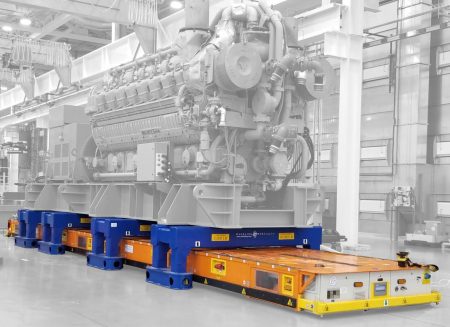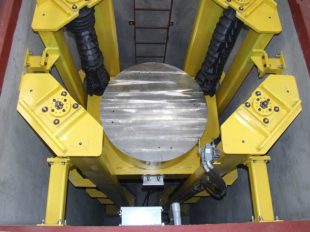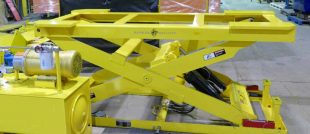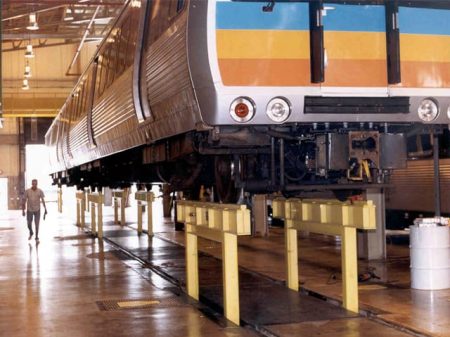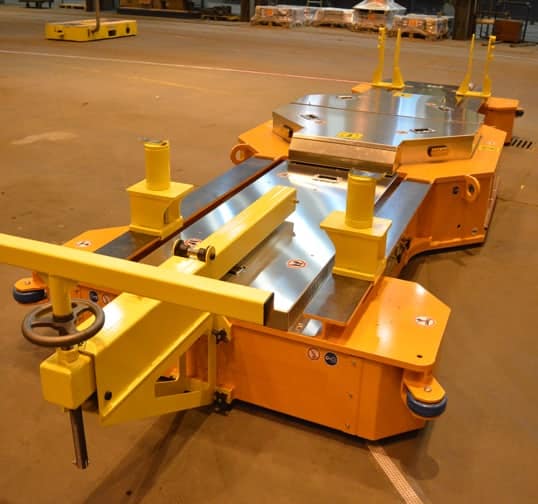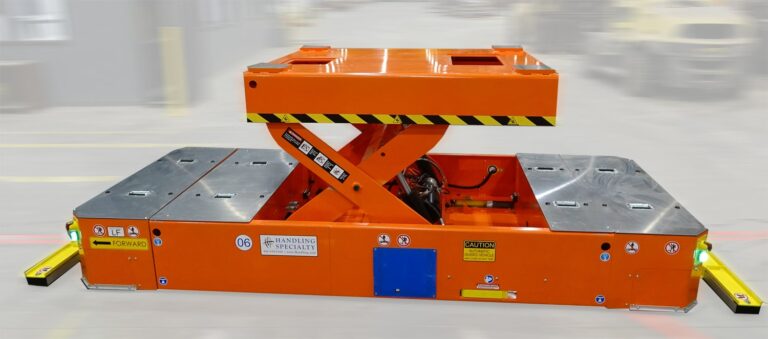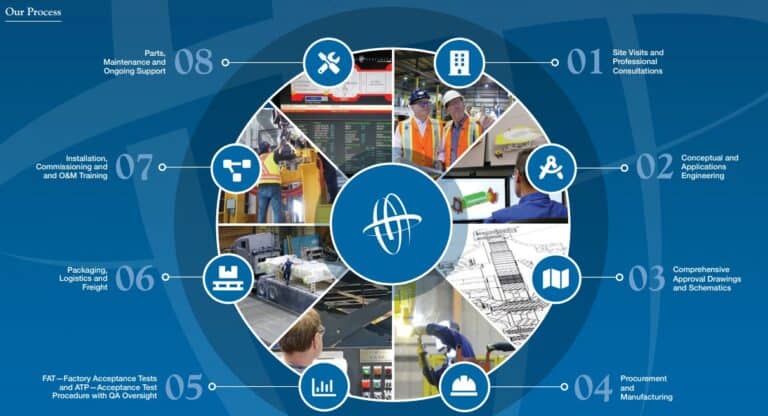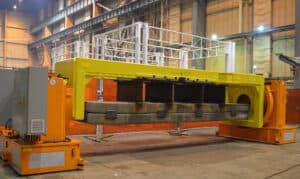The future of Automated Guided Vehicles (AGVs) seems secure. AGVs have long been at the forefront of industrial automation, and the innovations and challenges in automated guided vehicles are revolutionizing assembly and manufacturing processes. However, as technology continues to evolve rapidly, the future of AGVs is poised for even more remarkable transformation. From advancements in artificial intelligence to integrating renewable energy sources, the landscape of AGVs is set to undergo significant upgrades. This article explains the future, emerging technologies, innovations, and challenges in Automated Guided Vehicles.
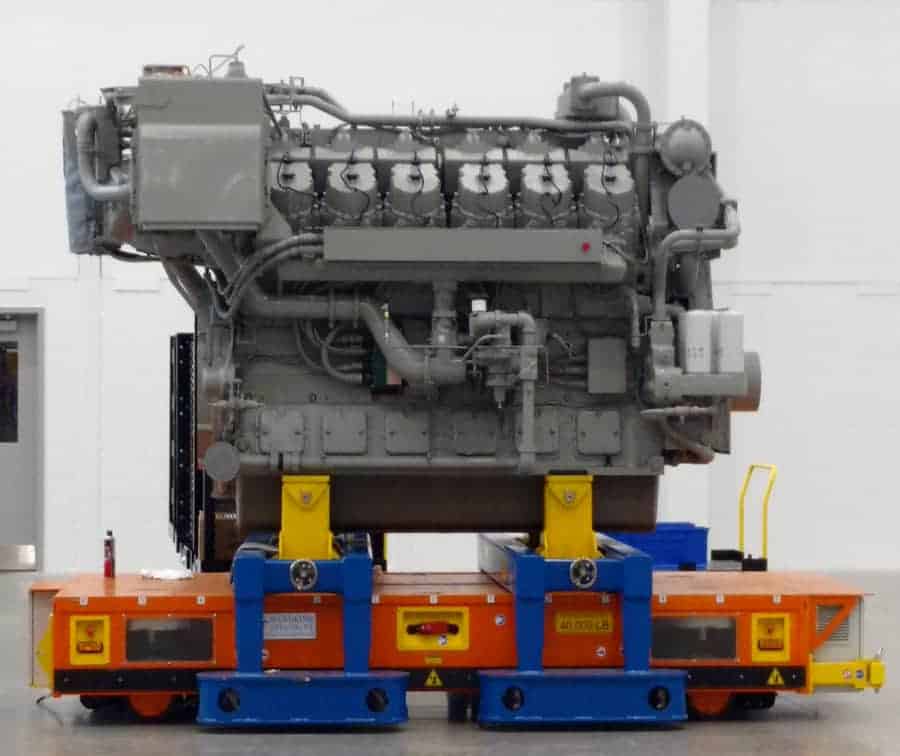
Emerging Technologies in AGV Development
The world of Automated Guided Vehicles is witnessing a surge in technological advancements. One of the most notable developments is the integration of Artificial Intelligence (AI) algorithms, which enable AGVs to make real-time decisions, adapt to dynamic environments, and optimize routes for maximum efficiency. Additionally, innovations in sensor technology, such as LiDAR and 3D vision systems, enhance AGVs’ perception capabilities, allowing for safer and more precise navigation.
Increased Integration with IoT and AI
The convergence of AGV technology with the Industrial Internet of Things (IIoT) is reshaping how these vehicles operate within industrial ecosystems. IoT integration enables seamless communication between AGVs, other machinery, and control systems, enhancing coordination and productivity. Real-time data exchange facilitates predictive maintenance, reducing downtime and optimizing operational performance.
Sustainability in AGV Design
The future of Automated Guided Vehicles lies in autonomous operations, where vehicles can operate without human intervention. Advanced algorithms and sensor fusion techniques empower AGVs to navigate complex environments, avoiding obstacles and optimizing paths autonomously. Moreover, there is a growing emphasis on eco-friendly design, with manufacturers incorporating renewable energy sources such as solar panels and lithium-ion batteries to power AGVs. These eco-friendly initiatives reduce carbon footprint and contribute to long-term sustainability goals.
Broader Industry Adoption and New Markets
The Automated Guided Vehicles industry is experiencing rapid expansion, fueled by increasing demand across various sectors beyond traditional warehousing. Industries such as MRO, assembly, and manufacturing are recognizing the benefits of AGVs in streamlining processes, improving efficiency and safety, and reducing operational costs. As a result, new markets are emerging, presenting opportunities for AGV manufacturers to diversify their offerings and cater to evolving customer needs. AGVs are being utilized in the automotive, aerospace, power generation, process, rail and transit, and even iron and steel industries. Efficiency and AGV systems are recognized everywhere.
Solutions and Challenges in Automated Guided Vehicles Evolution
Despite the promising outlook, the future of AGVs is not without challenges. One of the key concerns is regulatory compliance, as the deployment of autonomous AGV systems raises questions regarding safety standards, liability, and legal frameworks. Additionally, technical challenges such as cybersecurity threats and interoperability issues must be addressed to ensure seamless integration within existing infrastructures.
The future of AGVs holds immense potential to revolutionize industries and redefine workflows. As technology continues to advance, AGVs will become increasingly intelligent, versatile, and environmentally sustainable. The widespread adoption of AGVs will enhance operational efficiency, reduce labor costs, and improve workplace safety. Moreover, AGVs will play a pivotal role in enabling the transition towards smart, interconnected factories of the future.
Handling Specialty recognizes that the future of Automated Guided Vehicles is marked by technological innovation, industry expansion, customization, and sustainability initiatives. From AI-powered autonomous operations to eco-friendly design principles, AGVs are poised to reshape the industrial landscape. However, addressing regulatory challenges and ensuring seamless integration will be crucial for unlocking the full potential of AGV technology. As AGVs continue to evolve, their impact on industries will be profound, driving efficiency, productivity, and sustainability in the years to come.

